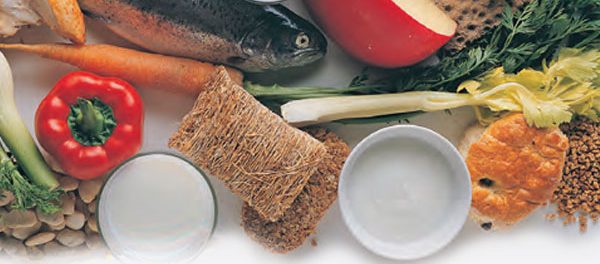What’s Old Is New Again: THE MEDITERRANEAN DIET
By Amy Campbell, MS, RD, LDN, CDE
What if there was a diet that allowed you to eat foods that you actually liked, helped your diabetes, lowered your risk of heart disease, let you drink a little wine, and tasted good, too? Does such a diet even exist? Yes!
The Mediterranean Diet
While this might sound like just one more fad diet to come along, the Mediterranean diet is really more of a lifestyle— and it’s been around for generations. In fact, the Mediterranean diet is based on the traditional foods and customs of many countries, such as Greece and Italy, that border the Mediterranean Sea. Eating is meant to be enjoyed and shared with others. Being physically active and not smoking are two other important parts of the Mediterranean lifestyle.
What’s so good about the diet?
The Mediterranean diet is good for you for a number of reasons. This kind of eating plan is rich in antioxidants (nutrients that can help fight some diseases), fiber, potassium and omega-3 fatty acids and other healthy fats. Studies show that people who eat this way have a lower risk for heart disease and stroke, as well as a lower risk of dying from heart disease. How? This diet can help lower LDL (bad) cholesterol levels, along with blood pressure and the risk of having a blood clot.
But there’s more. The Mediterranean way of eating can also lower your chances of getting some types of cancer, Parkinson’s disease and even Alzheimer’s disease.
It’s even possible that the Mediterranean diet may help prevent type 2 diabetes. One study of 13,000 people found that those who followed a Mediterranean diet and ate mostly vegetables, fish and healthy fats, such as olive oil, had a much lower risk of getting diabetes than those who didn’t eat this way.
What about red meat, wine and desserts?
Red meat, such as beef, pork, lamb and veal, are usually only eaten a few times a month—not as often as fish and poultry. Red meats contain more saturated fat (the kind of fat that can raise cholesterol levels) than poultry and fish.
Red wine is a part of the Mediterranean diet, but in limited amounts. For example, men should have no more than two glasses a day, and women, no more than one glass per day. Red wine is linked with a lower risk of heart disease, but some people shouldn’t drink wine or other types of alcohol, including people with heart or liver disease, pregnant or breastfeeding women and those with a history of alcohol abuse. Wine may also increase the risk of low blood glucose for those who take insulin or certain types of diabetes medicines, so always eat food when drinking. Talk with your health care provider if you have any questions about wine or other types of alcohol.
Fruit is usually the choice for dessert.
The following foods are a daily part of the eating plan:
Vegetables: broccoli, spinach, eggplant, peppers, salad greens, tomatoes, mushrooms, onions, carrots—or any kind you like
Fruits: apples, citrus, strawberries, grapes, mangoes, pears, avocados
Grains and starches: couscous, pasta, polenta, brown rice, oatmeal, bulgur, whole-grain breads
Fish and poultry: any kind of fish and seafood— especially salmon, tuna and mackerel; chicken and turkey without skin
Beans and peas: chick peas, lentils, white beans, black beans
Nuts and seeds: almonds, walnuts, pecans, hazelnuts, pumpkin seeds, sesame seeds
Fats and oils: olives, olive oil, canola oil
Also included, but in smaller amounts, are milk, yogurt and cheese. If milk and yogurt are part of your usual meal plan, just be sure to choose nonfat or low-fat versions. Small amounts of cheese are OK; aim for lower-fat versions, if possible. And season your foods with herbs and garlic.












